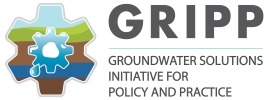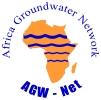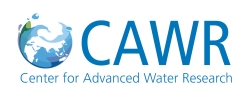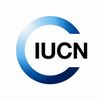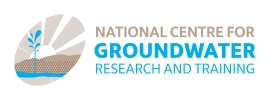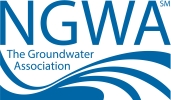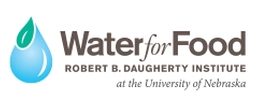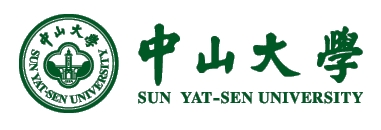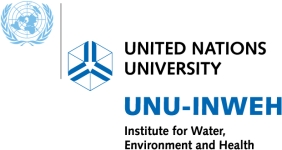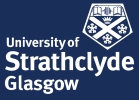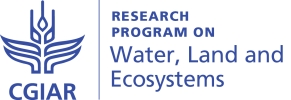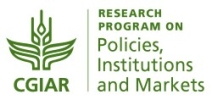Success factors of an offsetting scheme in Kumamoto, Japan
Payment for Ecosystem Services and groundwater recharge – What is it?
Payments for ecosystem services (PES) is a market-based mechanism aimed at sustaining the flow of such services. Through a PES scheme, beneficiaries or users of the ecosystem service(s) compensate the provider or manager of those services, directly or indirectly. The provider and beneficiaries agree on the terms and conditions of the PES and usually enter into a formal agreement. PES could be a cost-effective solution for groundwater-based natural infrastructure as well. In the case of managed aquifer recharge (MAR), the major challenge for establishing a PES, however, is uncertainty related to the invisibility of the hydrogeological processes and the fate of recharged water. In addition, since groundwater is an open access resource, it is administratively challenging to define a boundary condition (i.e., which users within a certain area are entitled to the additional water), which is important as a basis for determining a cost-benefit sharing mechanism for the PES.
Groundwater offsetting scheme in Kumamoto, Japan – How does it work?
Kumamoto, a common name used for both the prefecture and city in question, is located in the southern Kyushu Island, one of Japan’s four major islands (Figure 1). The prefecture is famous for its high-quality and abundant groundwater reserve, and over one million inhabitants, including close to 700,000 residing in Kumamoto City, and other sectors (agriculture and industries) are mainly dependent on groundwater for water supply [1]. Pyroclastic deposits from volcanic eruptions during various geological periods constitute the groundwater basin [2]. High precipitation (average 2,200 mm/year) and permeability of the deposits created the groundwater storage in the confined and unconfined aquifers [2]. The confined aquifer is the major groundwater resource in Kumamoto. Of the total 107 million cubic meters (Mm3) extracted in 2015, domestic water supply was the largest user, accounting for 72%, while agriculture and industries accounted for 9% and 8%, respectively [3]. Groundwater came under pressure from increasing demand for city water supply, industries and agriculture. Increasing abstraction, combined with a decline in recharge conditions due to urbanization and industrialization and changing farming practices, were responsible for depleting groundwater. This posed a looming water security risk for Kumamoto, as groundwater has traditionally been a clean, plentiful and convenient source of water supply.
In response, the city adopted the Declaration of the Groundwater Preservation City in 1976 and initiated efforts to conserve groundwater resources through measures such as the installation of groundwater observation wells [4]. The industrial and agricultural sectors also made efforts to reduce groundwater withdrawals, while abstraction from the city saw a slight increase [2]. Later on, research conducted at the Kumamoto Campus of Tokai University, Kumamoto University and others found that enhancing recharge is a viable option to combat increasing groundwater demand and decreasing recharge condition caused by land-use changes. Abandoned rice fields along the Sirakawa River (Figure 1) were found to be ideal for groundwater recharge, as water can be taken from local streams and the river during the wet season as source water for recharge through existing irrigation canals. However, creating a scientific basis and an enabling institutional environment to undertake groundwater recharge was quite challenging. A sound understanding of the hydrogeology, high recharge rates in the rice fields (100-200 mm/day), groundwater modelling studies, and data (quality and quantity) from observation wells were necessary to assess the technical feasibility [2] [5]. National legislation allowed MAR, because laws governing groundwater are distributed and do not clarify the recharge aspect in depth, except that it should not affect water quality (under pollution control laws).
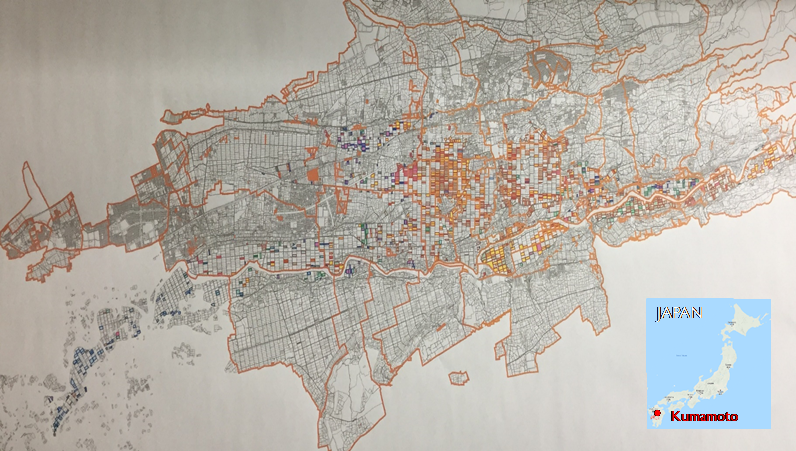
Figure 1. Map showing the rice fields (coloured squares) along Sirakawa River in Kumamoto (Credit: ‘Midori Network Ookiku’, Otzu city, Kumamoto)
A market mechanism was needed to finance the recharge scheme. After consultation with stakeholders, an offsetting scheme was devised, in which major groundwater users (Kumamoto City water utility and the private sector) agreed to pay farmers for their groundwater. The scientific base helped establish a standard payment rate, based on equivalent flooded area per month (hectares [ha] per month) as a unit; farmers were paid JPY 11,000 (about USD 100), JPY 16,500 (USD 150) and JPY 22,000 (USD 200) for flooding a 1,000 m2 rice field for 1, 2 and 3 months, respectively. Offsetting offered a pragmatic solution, as it mainly depends on the recharge condition and quantity. It was a win-win option, because the farmers could get direct cash payments, while the city and private sectors could offset their groundwater abstraction in a transparent manner. In recent times, falling rice consumption throughout Japan and the national agricultural policy limiting the area under rice cultivation in order to maintain a stable market price for rice are prompting farmers to fallow their rice fields or change to alternative crops [2]. Therefore, the PES for groundwater recharge was a good deal for a mostly aging farming community facing the impacts of declining rice consumption and falling market price for rice. In addition, after the flooding season and during the rest of the year, the farmers can still grow other crops (such as vegetables).
Outcomes
Fully functional since 2004, this is perhaps the only successful PES scheme for groundwater recharge [4]. It started when the Kumamoto Technology Center of Sony Semiconductor Co. and Kumamoto City paid the farmers [6]. The scheme then gradually expanded to include other private sector firms (such as fruit farms, and the biomedical and beverage industries). Between 2004 and 2007, the number of farming families participating increased from 298 to 475 [6].
The recharge area per month (hectares per month) has more than doubled from 291 ha/month in 2004 to an estimated 636 ha/month in 2018. An estimated 163 Mm3 was infiltrated under the recharge scheme during the past 14 years (2004-2017) [6]. In recent years, flooded fields have offset around 2 Mm3 and 12 Mm3 of the annual groundwater abstraction for industries and the Kumamoto City water supply, respectively [6]. This is about 13% of total water demand.
The PES scheme has received a positive response from many stakeholders in Kumamoto, such as the city government, university, Kumamoto Ground Water Foundation, farmers, industries and local non-profit organizations (NPOs). The active involvement of local NPOs, such as the Kumamoto Environmental Network, has contributed importantly to promoting the scheme [7]. It was even acknowledged through the 2013 ‘Water for Life’ UN-Water Best Practices Award [4]. Groundwater recharge is now one of the highest water resource management priorities of the city water conservation division. The Kumamoto City Water Source Forest Development Policy 2004 identified the role of forest in contributing to groundwater recharge and flows of major rivers, and the prefecture maintains a forest area of about 900 ha [8].
Parallel to the PES scheme, there is another indirect approach to offsetting groundwater abstraction. Under this approach, agricultural products grown/raised (rice, vegetables, cows) in the fields along the Shirakawa River are labelled and sold as eco-products (Figure 2) [9]. For instance, purchasing 1 kg of eco-rice is equivalent to recharging 20 m3. Similarly, each 100 g meat of “rice cow” (i.e., cows raised by feeding on rice grown in the recharge fields) will contribute to 20 m3 of recharge while growing the feed. The sale of eco-labelled products (e.g., under the brand name Mizu-no-Megumi, meaning “water’s blessings”) is a way to encourage more farmers to grow rice by providing additional co-benefits, such as better market publicity and premium prices [10]. Unlike PES, this approach is non-binding for the farmers and relies on voluntary contributions from the potential buyers of agricultural products. The eco-product idea has expanded into other areas, where it promotes reduced pesticide use and organic fertilizers to reduce the negative impact on groundwater quantity. As of 2017, 38 offices and organizations located mostly in Kumamoto and Kyushu region, such as JA Kikuchi, are associated with this offsetting initiative and support the promotion of eco-labelled agricultural products.
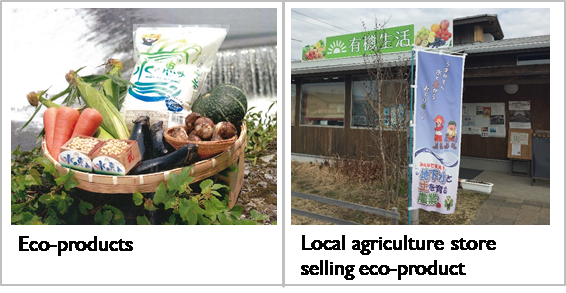
Figure 2. Eco-products contributing to groundwater recharge in Kumamoto (Credit: ‘Midori Network Ookiku’, Otzu city, Kumamoto (left) and B.R. Shivakoti (right))
The recovery of the groundwater table is visible in the groundwater observation wells, having stabilized at levels comparable to pre-industrial levels in the 1950s [5]. However, there are concerns about the rise of nitrate-nitrogen into the aquifer since 2004 [11]. The city has developed the “Plan for the Reduction of Nitrate-Nitrogen Loads in Kumamoto city”, in which reducing the use of fertilizers, proper treatment of animal wastes, and composting are prioritized.
Success factors and lessons
Strong interest and support over the past 14 years is a testimony to the success of the PES scheme. The development of a scientific understanding of the recharge was fundamental to its success. Groundwater experts and researchers, mainly from local universities, played a pivotal role in establishing the technical feasibility and viability of PES. Groundwater modelling and verification of the fate of infiltrated water by regular monitoring of groundwater levels reinforced the scientific basis behind the PES scheme [12].
Flexibility on the flooding condition was also important for convincing farmers. They are free to use their fields for cropping during non-flooding periods. Under the current arrangement, the rice fields are usually flooded during the wet summer (May-July) season. More recently, another beverage company (Suntory) initiated a flooding trial in the winter season (Figure 3).
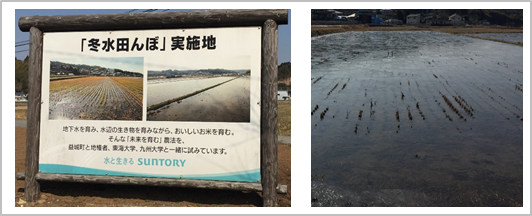
Figure 3. New trial of flooding rice field flooding to recharge groundwater in winter at Mashiki-machi, Kamimashiki, Kumamoto. (Credit: B.R. Shivakoti)
However, the most important success factor is the coordination role played by the local agriculture association, known as Midori Network Ookiku (MNO), which is overseeing the operation of the PES scheme. The MNO, which is normally involved in irrigation management, took the responsibility to administer the PES scheme. The MNO mediates between providers and buyers of ecosystem services and enters into formal agreements with farmers before each flooding. The MNO monitors the conditions of flooding in each field (Figure 4) and prepares a report on the results. Under the contract, farmers are required to report the conditions in their fields at the beginning and end of the flooding period. The MNO can terminate the contract with farmers failing to comply with the flooding contract and automatically remove them from the payee list. Based on the monitoring and reports by farmers, the MNO prepares a technical and financial report and submits it to the participating buyers (city water utility and private companies) for their review. After review and approval, the buyers transfer the requested fee (PES and administrative cost) to the MNO, which then transfers the payments to eligible farmers’ bank accounts.


Figure 4. Monitoring process to verify the state of flooding in rice fields registered under the PES scheme (Credit: ‘Midori Network Ookiku’, Otzu city, Kumamoto)
The promotion of vegetables and rice grown as eco-products in the recharge area as well as the adoption of organic farming (using organic fertilizers and less pesticide) provided an additional incentive for farmers to continue flooding and growing crops during non-flooding periods.
What’s next?
The PES for groundwater recharge in Kumamoto, Japan, is a successful case of MAR. A common question that arises is the feasibility of transferring this scheme to other countries. As a developed country, Japan has a conducive environment for implementing market-based instruments, so it was relatively easy to implement the PES scheme, considering the importance of groundwater for the city’s water security as well as the mature agricultural business. It could be argued that a similar PES idea may be less feasible in developing countries, especially due to the rate of payments. However, the important message here is the viability of ecosystem-based recharge if it is backed by sound research and implemented effectively. Many areas in developing countries, especially in Asia, are seeing severe water scarcity, and groundwater resources are under pressure from both increasing demand as well as from climate change-induced droughts and rainfall variability. Climate funds could be strategically diverted to support PES-based MAR schemes. Direct financial flows would enhance the asset base of farmers adopting recharge measures, while the enhancement of aquifer storage could insulate farm communities and co-located and co-benefitting industries against climate change-induced water scarcity. The Kumamoto experience could be a good business model for groundwater-based natural infrastructure solutions.
Binaya Raj Shivakoti1*, Tsutomu Ichikawa2, Karen G. Villholth3
1* Institute for Global Environmental Strategies (IGES), Japan; Email: shivakoti@iges.or.jp
2 Tokai University, Kumamoto,, Japan
3 International Water Management Institute (IWMI), South Africa
Acknowledgements
This article is based on a field study in Kumamoto carried out by IGES. The contact author would like to thank the following for support received in Kumamoto:
- Tsutomu Ichikawa, Tokai University, Kumamoto Campus for providing relevant data, reports and sharing the progress of the PES.
- Water Conservation Division, Kumamoto City for sharing the data of recharge project and updating on the progress and future plans
- Agriculture cooperative ‘Midori Network Ookiku’, Otzu city, Kumamoto for explaining the operation and management of PES
- NPO Environment Network Kumamoto explaining the role of stakeholders and facilitating visit to local shop selling eco-products






